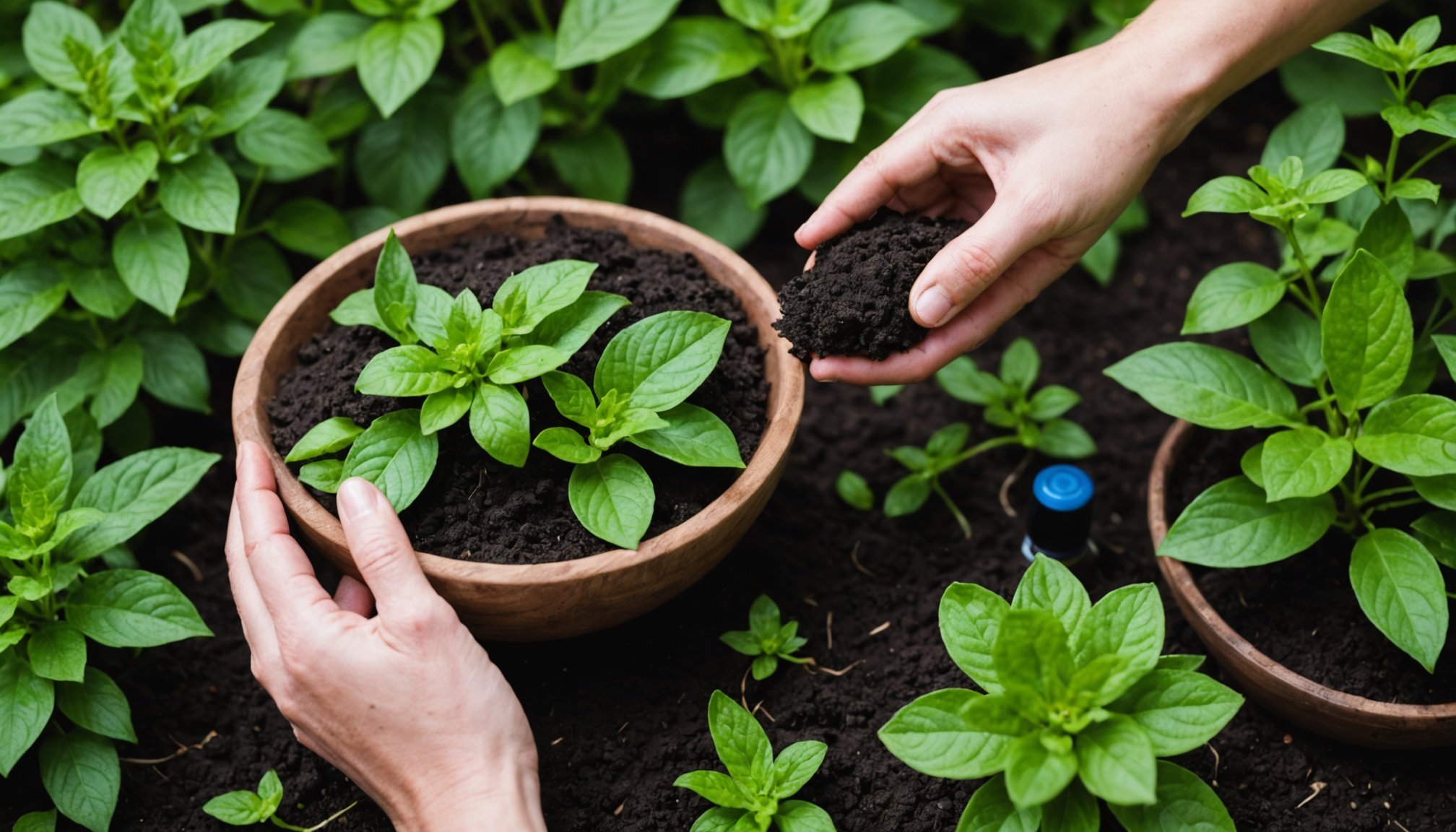Introduction to DIY Skincare Gardens
Cultivating a DIY skincare garden can offer a plethora of benefits, allowing for the creation of personalised, natural products tailored to individual skincare needs. Such gardens not only provide fresh, organic ingredients but also reduce reliance on commercially produced cosmetics, which often contain synthetic additives. By growing your own botanicals, you gain control over what goes into your skincare regimen and ensure the use of pure, unprocessed ingredients.
A well-curated botanical garden might include potent plants like aloe vera, renowned for its soothing and hydrating properties; chamomile, which helps calm irritated skin; or calendula, celebrated for its healing capabilities. These examples demonstrate how understanding plant properties becomes crucial in effectively addressing specific skin concerns through natural means.
Also to discover : Discover the perfect blend: essential tips for selecting stylish and cozy home office outfits
Furthermore, having a DIY skincare garden encourages sustainable practices and environmental consciousness. The process of cultivating, harvesting, and applying these plants can be an empowering journey, fostering a deeper connection with nature. As you explore the potential of such a garden, recognising the distinct benefits of each botanical will guide you in crafting effective, personalised skincare solutions drawn directly from your own green space.
Essential Botanicals for Skincare
The power of nature in skincare often lies in skincare botanicals, which offer an array of benefits from moisturising to soothing. These botanicals provide harmonious care, ideal for achieving healthy, vibrant skin. Each plant features distinctive properties, enhancing skincare benefits tailored to individual needs.
Topic to read : Top Eco-Friendly Strategies for Running a Fashion Blog in the UK
One widely celebrated botanical is aloe vera, renowned for its soothing and hydrating qualities. Often used in products for sensitive skin, aloe vera helps relieve irritation and maintain moisture. Meanwhile, chamomile is treasured for its calming properties, reducing redness and inflammation, making it popular in products designed for sensitive complexion.
Another key plant is rosehip, packed with antioxidants and vitamins C and A, which encourage skin repair and rejuvenation. Rosehip oil is a favourite for revitalising and reducing signs of ageing. Also noteworthy is the tea tree plant, famous for its antibacterial properties, providing an effective solution for acne-prone skin by targeting blemishes without stripping natural oils.
UK-native plants like the elderflower offer unique benefits, such as toning and enhancing skin clarity. Its firming aspects are nature’s gentle answer to ageing, proving skincare botanicals are both diverse and versatile. Emphasising these botanical properties enriches skincare routines and promotes natural beauty.
Growing Conditions and Care Tips
Plant enthusiasts understand that successful plant cultivation relies heavily on appropriate gardening tips and effective plant care. To begin, consider the soil and light requirements vital for each botanical species. Certain plants thrive in well-drained soil with high organic matter, while others prefer sandy or clay compositions. Sunlight exposure is equally critical; a plant’s health often hinges on its need for full sun, partial shade, or indirect light.
An effective watering regimen is essential for healthy cultivation. Overwatering can lead to root rot, while underwatering may stunt growth. It’s crucial to adjust watering schedules according to the plant’s specific needs and environmental conditions. Additionally, fertilization should be tailored to the plant species and growth phase, using either organic or synthetic options as appropriate.
Considering the UK’s distinctive climate, seasonal adaptations play a pivotal role in plant care. Winters demand frost protection measures, such as mulching or indoor relocation. In contrast, summer months may necessitate increased watering and shading. By adhering to these gardening tips, cultivating thriving plants in various conditions becomes achievable, ensuring a rewarding gardening experience.
Sourcing Seeds and Plants in the UK
Finding the right seeds and plants is crucial for UK gardening enthusiasts. Numerous local nurseries and online resources can assist in sourcing the best botanicals. A few reliable options include the Royal Horticultural Society (RHS) plant centres and online seed suppliers like Thompson & Morgan. These platforms offer a wide variety of options for enthusiasts of different levels.
When selecting botanicals, there are some tips to keep in mind. Look for seeds with a high germination rate, which indicates healthier plants. Also, verify that plants are disease-free, as this influences your garden’s success.
Choosing organic and sustainable options not only benefits your garden but the environment as well. Organic seeds are often free from harmful chemicals, ensuring safer growth environments. They are also an excellent choice for attracting beneficial wildlife to your garden.
Advantages to these sustainable practices include:
- Reducing environmental impact
- Promoting biodiversity
- Supporting healthier soil quality
In summary, a combination of local nurseries, online seed suppliers, and a focus on organic and sustainable options can significantly enhance your gardening experience in the UK, leading to a thriving and resilient garden.
Seasonal Planting Guide
Navigating the seasons can be overwhelming for novice gardeners. By following a tailored planting schedule, you can effectively manage your garden year-round. In the UK, understanding seasonal gardening means aligning your activities with the climate. Begin by considering your local climate zone, as this impacts when to plant and harvest various botanicals.
For instance, March is ideal for sowing carrot seeds, while planting potatoes is best done in April. These timelines vary across regions, making it crucial to adjust based on frost dates and temperature trends.
Companion planting is another strategy that boosts your harvest. By pairing plants like tomatoes and basil, which thrive together, you can enhance growth and deter pests naturally. This practice not only improves yields but also contributes to a healthier ecosystem within your garden.
To achieve optimal results, experiment with integrating these elements into your UK gardening tips. Plan your garden layout to incorporate compatible plant combinations, allowing for efficient space use and maximized productivity. As you refine your planting schedule, continually adapt to what works best for your unique setting and conditions.
DIY Skincare Recipes Using Botanical Ingredients
Creating your own skincare formulations at home can be both enjoyable and beneficial for your skin. By incorporating natural skincare elements, you can tailor products to suit your needs.
Moisturizing Lotions and Creams
Start by selecting soothing botanical ingredients like aloe vera or chamomile. These natural components are renowned for their hydrating and calming properties. An easy DIY recipe involves combining melted beeswax with coconut oil, adding a few drops of your favourite essential oils, and blending thoroughly. Allow the mixture to cool, and voilà — a luxurious cream is ready!
Exfoliating Scrubs
To combat dry, flaky skin, exfoliating scrubs are essential. A blend of sugar or sea salt with olive oil provides a simple, effective scrub that suits most skin types. Optional additions of orange peel powder offer a refreshing natural skincare boost, leaving your skin irresistibly smooth.
Herbal Infused Oils
Herbal infused oils are another delightful addition. Start by gently heating a base oil, such as jojoba or almond, and add dried herbs like lavender or rosemary. Allow the infusion to sit for a few weeks. Once strained, these oils are potent moisturizers and can be used standalone or added to other DIY recipes for enhanced benefits.
Visual Aids and Diagrams
Visual aids play a crucial role in understanding plant care. For gardening enthusiasts, using gardening visuals can simplify complex information, making it accessible and engaging. These visuals are not only educational but also enhance the gardening experience by providing clear insights into various aspects of garden management.
Incorporating educational diagrams when planning your skincare garden can significantly streamline the process. Diagrams offer a tangible way to visualize the layout, ensuring efficient use of space and resources. They can guide where each plant should go, considering factors like sunlight exposure and water needs.
Illustrations depicting plant growth stages are invaluable for grasping the best practices required for each phase. Whether young seedlings or mature plants, visuals help gardeners identify key growth milestones and necessary care routines. This information is particularly beneficial for those new to gardening, offering a straightforward approach to recognizing and responding to plant needs effectively.
- Illustrate layout planning with suggested diagrams to optimize space.
- Use illustrations to depict plant growth stages and relevant care activities.
By integrating visually appealing aids, your gardening journey becomes not only more informed but also more enjoyable, fostering deeper engagement with the natural beauty surrounding you.
Final Thoughts and Additional Resources
Exploring community support and self-directed learning through online platforms provides invaluable insights for your DIY projects. Engaging with online forums and local gardening clubs offers opportunities to share your experiences and ask questions, fostering a sense of community.
These platforms are great resources to discuss DIY skincare challenges or find solutions in gardening pursuits. Members often share practical advice and personal success stories, enhancing your learning journey.
For those keen on expanding their knowledge, various gardening guides and DIY skincare resources are available. Books such as “The Garden Primer” and “Natural Beauty from the Garden” provide thorough insights and techniques. Websites dedicated to DIY enthusiasts, like Home Skincare Bible, supply step-by-step tutorials and safety tips.
In addition to reading materials, connecting with local clubs can vastly enrich your understanding. Clubs and communities organize workshops and field trips, enabling hands-on learning alongside fellow enthusiasts.
Ultimately, sharing your outcomes and newfound skills can be particularly gratifying. Whether through blog posts, social media, or club meetings, showcasing your achievements encourages dialogue and inspires others. These shared experiences, backed by recommended books and websites, allow continual growth and support. Your journey towards mastering your hobbies is just beginning.











